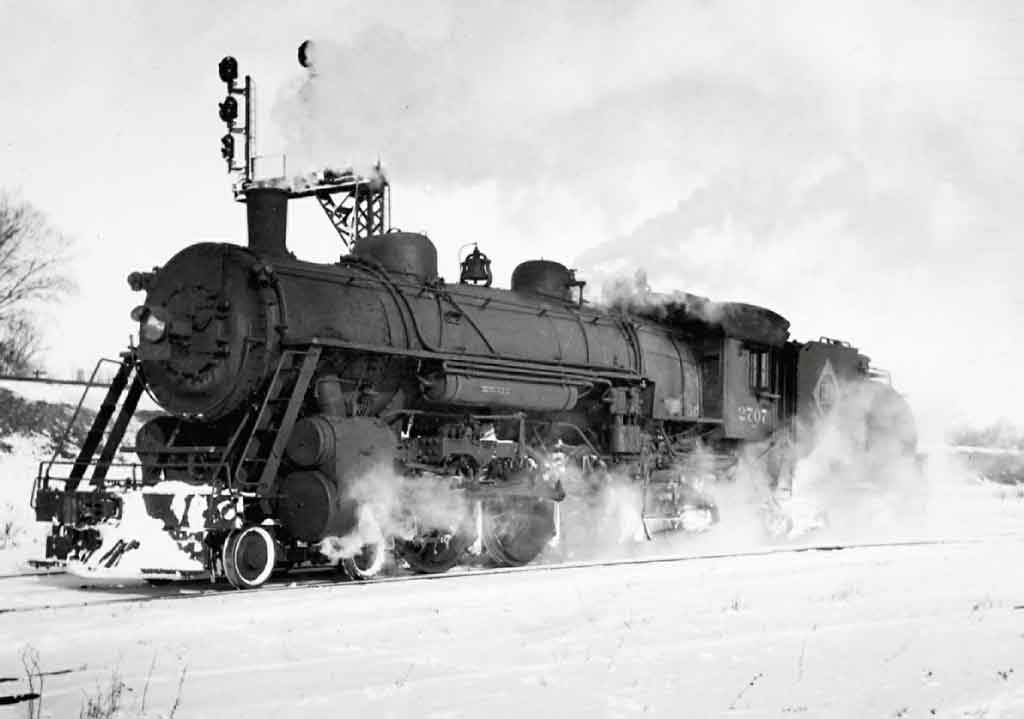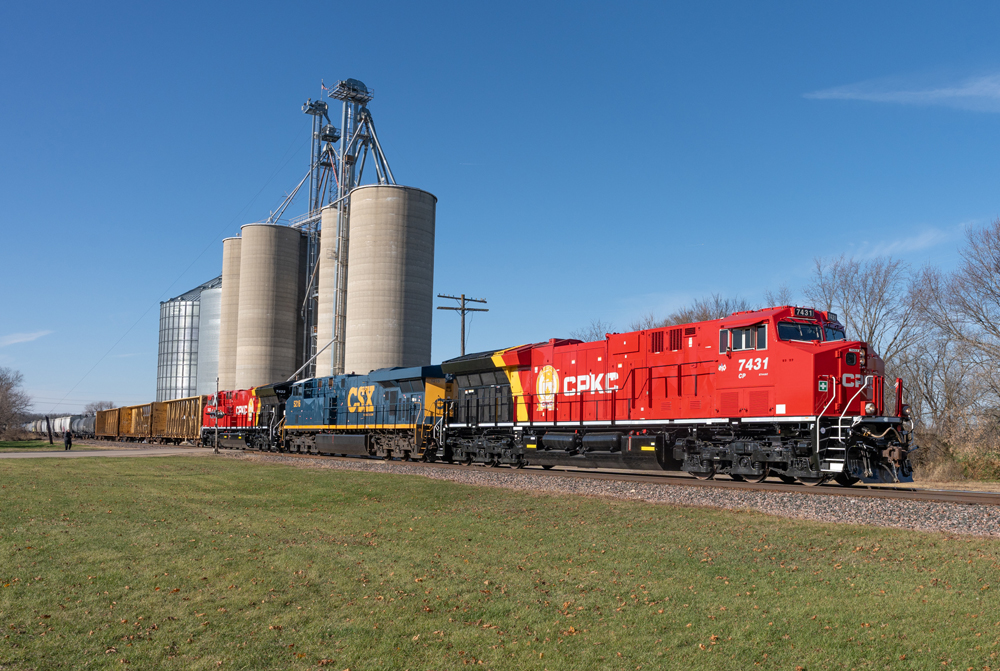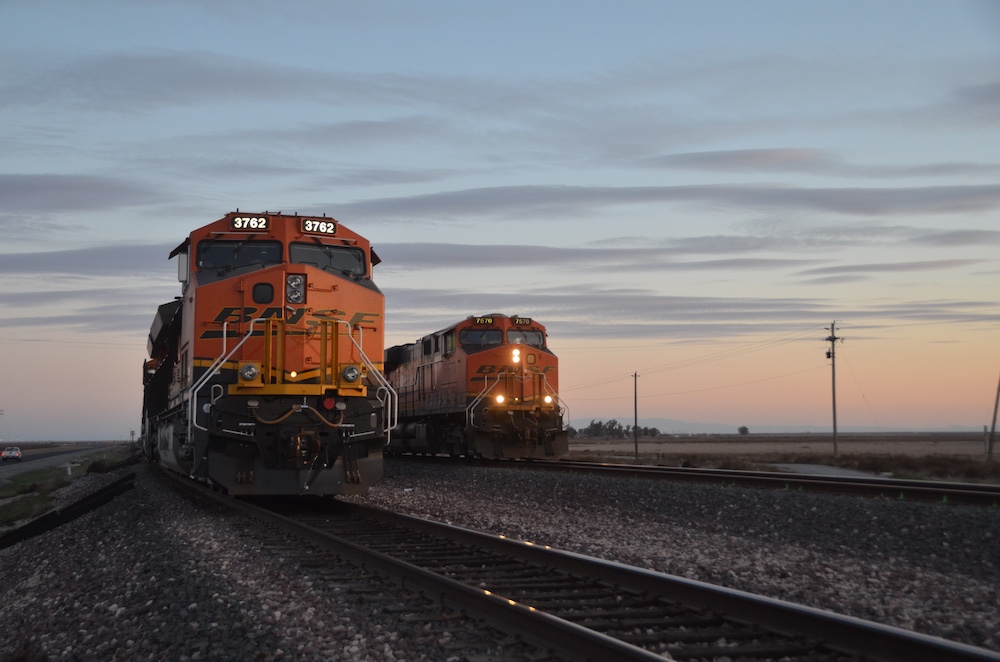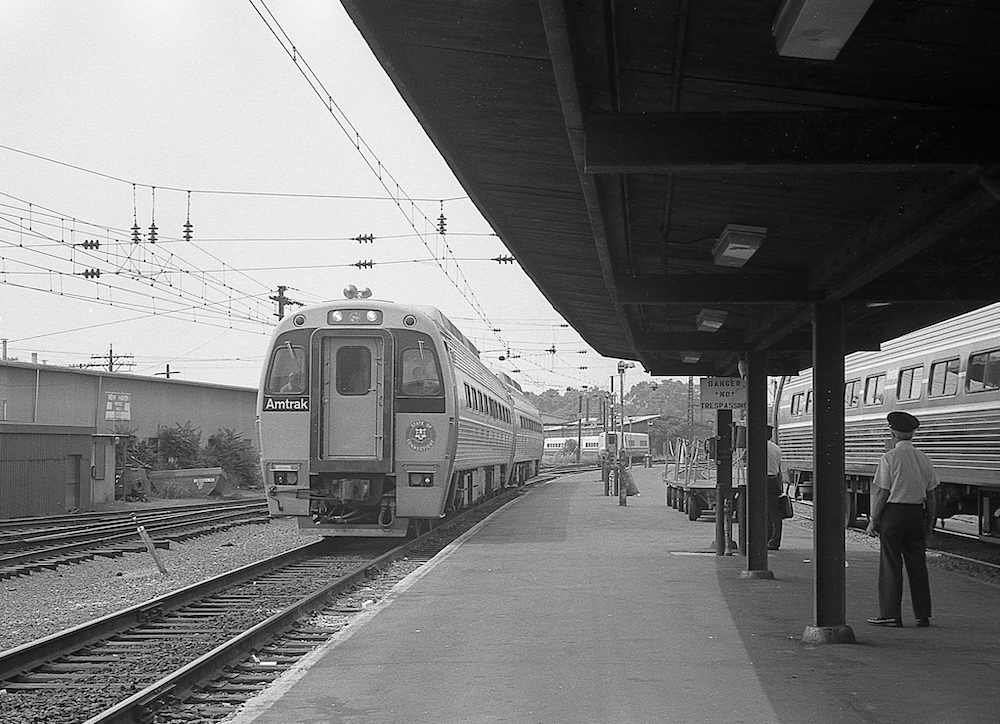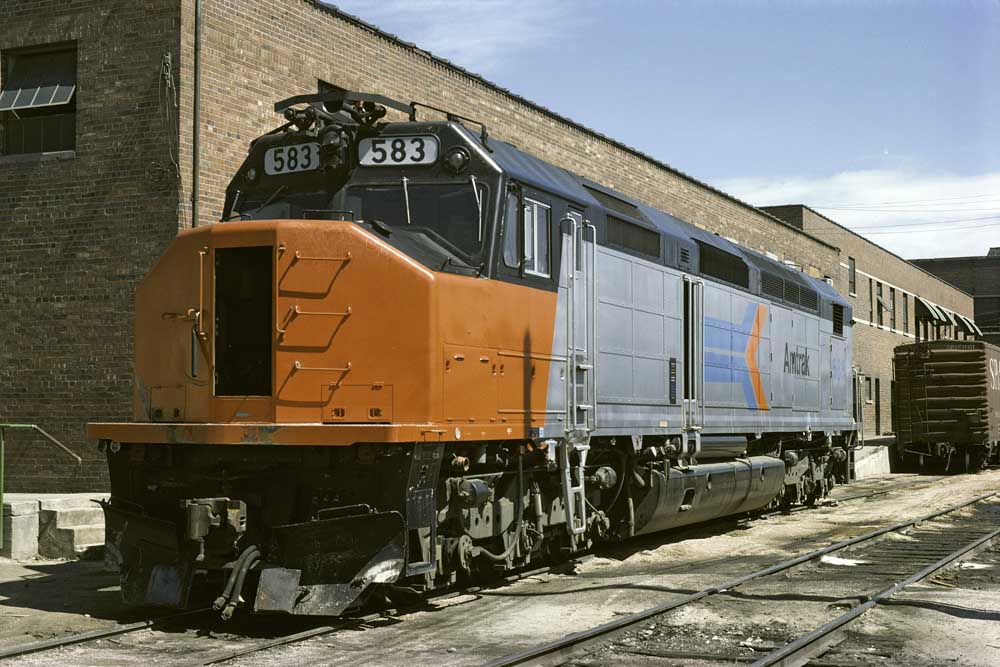In order to get his “slave labor” to perform, Dad would take us train-watching. Dad loved trains and steam engines. Just three miles from home, over in the northwest corner of Greene County, was the Atlas Cement Co. on Spangler Road, near Osborn (now called Fairborn). Atlas had an adjacent limestone quarry, but coal for fuel was needed and the finished product had to be hauled away. This called for railroad service, so Atlas had located its plant next to the Erie Railroad’s line linking Marion and Dayton.
Historically, Osborn had been forced to pick up and move its entire town when the Miami Conservancy District acquired the land for a flood plain following a big flood in 1913. The railroads moved too. Both the Erie and Big Four (formally, the Cleveland, Cincinnati, Chicago & St. Louis) realigned their tracks to parallel rights of way, 50 yards apart, from Enon to the new Huffman Dam. Traffic was shared, with the Big Four handling the eastbound trains and the Erie westbounds. Osborn’s new passenger station was right between the two, at the Route 235 crossing. By 1949, only New York Central, parent of the Big Four, was running passenger trains here.
A competitor to Atlas, Southwest Portland Cement, was across the tracks from the station adjacent to the Big Four. Southwest Portland had its own little saddle-tank type switch engine, No 11. Atlas was two miles away on the other side of the paired tracks.
But back to those beans. After they were picked and put in brown paper bags, we would load them in our 1948 Kaiser auto and ride to Spangler Road and park overlooking the Erie’s lead to the Atlas yard. There, we would snap the green beans and shell out the limas. All the while, we would be watching for trains. If we were lucky, during our one-hour stay we would see one or two trains in each direction.
What made our day, though, was an Erie Pacific, usually a 2700-series K-4, switching cars in the Atlas yard. Back and forth they would go, clanking and banging all the while, sending smoke and cinders into the air. Erie’s K-4’s, Nos. 2710 to 2733, were built by Baldwin back in 1913-14, and their 69-inch drivers made them suitable for both passenger and light freight work. The small Vanderbilt tenders had room for 8,000 gallons of water and 14 tons of coal. One K-4, No. 2739, built by Alco at Schenectady in 1916, was Erie’s last operating steam engine; she was not scrapped until December 16, 1954.
After an hour working on the beans, we usually had them done and so turned the car around and headed for home. Our route led up over a hill on Route 4. Just over the top of the hill was a Dairy Queen drive-in, and Dad typically stopped and bought us kids chocolate sundaes, and one for himself too. Perhaps being “forced” to snap green beans wasn’t so bad after all.
The Atlas cement plant has been dismantled except for the silos, which are used by Southwest Portland Cement for storage, and some narrow-gauge track that served the quarry. The Erie tracks are gone, as is the Osborn depot, but rock ballast remains to mark the right of way. The Big Four and NYC have given way to Norfolk Southern, now the only railroad in Greene County. Saddletanker 11 was replaced by diesels, which were replaced by trucks. But I still have a sister, and pleasant memories.
First published in Winter 2006 Classic Trains magazine.





